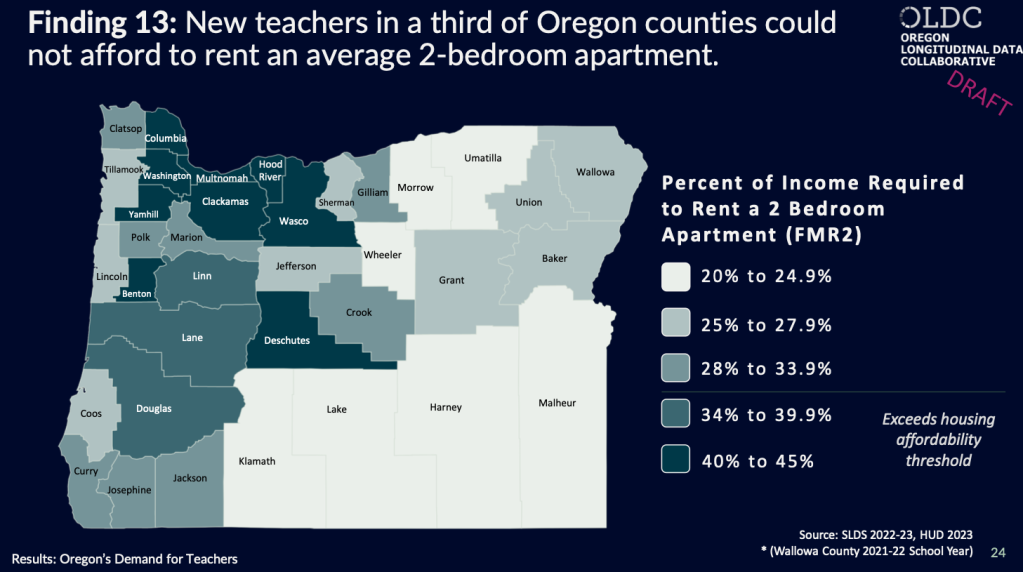Editorial: Do Oregon teachers need to be paid more and differently?
Published 5:00 am Wednesday, July 3, 2024

- Teachers and housing
When Oregon researchers look at data for Oregon teachers, they use a term that is maybe more literal than intended: “survival.”
It’s to describe how long a teacher works in the profession until they leave or retire.
Trending
“We want more than survival,” said state Sen. Mike Dembrow, a Portland Democrat and co-chair of a state task force looking at educator salaries.
There is a basic factor that may limit a beginning teacher’s survival in Oregon. New teachers in a third of Oregon counties cannot afford an average two-bedroom apartment in the county in which they work. That includes Deschutes County.
We checked it out for Bend. Consider a new teacher starting out in the Bend-La Pine Schools with a bachelor’s degree. A new teacher would earn $49,144. The general rule of thumb is that people shouldn’t spend more than 30% of their income on housing. Some say it’s 33%. In any case, for that new teacher starting out in Bend it’s not easy to find an apartment for $1,350 a month. There are some in that range. And there’s nothing wrong with having a roommate. But searching listings for Bend we couldn’t find a two-bedroom apartment for that price, so the general point seems correct. Finding housing in Bend is going to put a strain on a teacher’s finances from the start.
A state team of researchers, the Oregon Longitudinal Data Collaborative, dove into the housing data and more to help the state’s Joint Task Force on Statewide Educator Salary Schedules understand what is going on with state teacher pay. It also found:
Oregon does offer competitive teacher salaries nationally, but not when you compare starting teacher salaries for neighboring states.
Oregon has higher ratios of students to teachers, across K-12, compared to national and regional medians. That can make teaching more challenging.
Trending
Any need in Oregon for more teachers is limited not as much by the supply of teachers as it is by the resources available to pay them.
Those facts and others are forming the foundation of information before the task force makes recommendations to the Oregon Legislature. The task force may advocate switching to statewide collective bargaining of pay and benefits, having statewide salary schedules or minimums, setting higher compensation in rural areas to encourage educators to work there and requiring that student teachers get paid.
The complications are many. There is concern about what a statewide approach would mean to local decision-making for school boards and bargaining for local needs by unions. But the biggest concern is money. Where will the money to do all these things come from? Without new revenue, what state government program would you cut in order to send more money to K-12?
You can find a draft presentation of the Oregon Longitudinal Data Collaborative teacher research here: tinyurl.com/ORteacherresearch.








